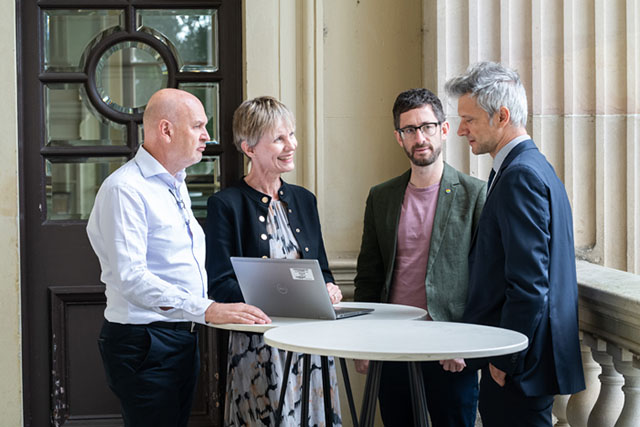A new tool to help Australian businesses connect with the research sector has been launched by CSIRO, Australia’s national science agency, in collaboration with The University of Queensland (UQ), Queensland University of Technology and RMIT.
The Collaboration Readiness Levels (CRL) tool helps small to medium sized businesses (SMEs) determine the best way to engage and collaborate with publicly funded research organisations.
CSIRO, UQ and the collaborating universities developed the tool after talking to more than 250 Australian SMEs (small to medium enterprises) for the last two years to find out what makes them ready to collaborate with universities and the barriers.
Associate Dean (Research) for the Faculty of Business, Economics and Law at UQ and key researcher on the project, Professor Martie-Louise Verreynne, said The CRL tool helps businesses understand their readiness level to engage with Research and Development (R&D) and links each level with suggested steps to progress activities beneficial to the company.

“The CRL tool provides information to participants on the types of collaborative activity with publicly funded research organisations that most suits their business and enables facilitators and researchers to manage the expectations of SMEs,” said Professor Verreynne.
The five levels of readiness for SMEs to partner with the research sector are: Considering, Networking, Cooperating, Engaging and Partnering.
“The Collaboration Readiness Levels are also complementary to NASA’s Technology Readiness Levels and can support a holistic view to approaching new collaborative research and development projects,” Professor Verreynne said.
“While aimed at SMEs looking for guidance, the CRL tool can also be used by funding agents, business development workers and research organisation staff who have a role in commercialising science for economic impact.
CSIRO SME Connect Deputy Director George Feast said, “Our research found when SMEs collaborate with universities or research organisations in Australia, they have higher levels of innovation, are better able to deal with uncertainty and are more profitable."
“The tool has been created in response to recommendations in the Enablers and Barriers to Industry R&D Collaboration report, where 800 SMEs said a device like this was needed to help them successfully navigate research and development opportunities.
“We anticipate that wide use of the Collaboration Readiness Levels tool will help Australian SMEs find well-suited partners and programs,” he said.
Managing Director from Select 3D, Anuja Rao, commenced participation in CSIRO’s Innovate to Grow which supports SMEs who want to progress their R&D opportunities or are in the early decision-making stages about engaging in R&D.
Ms Rao recently used the CRL tool and said, “R&D is sometimes a slow and risky experience. It is important as a leader to keep the team motivated despite hiccups and set an incremental pace.
“I liked that the CRL results informed our development of a draft R&D implementation schedule and I’m looking to now establish conversations with collaboration partners.”
The Collaboration Readiness Tool is available at: www.csiro.au/crl and research report: https://www.csiro.au/SMEreport
Contact: BEL Communications, communications@bel.uq.edu.au



